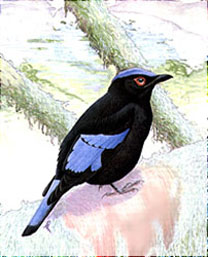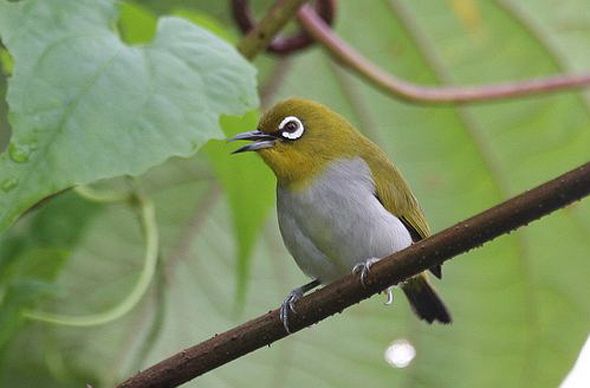 Lets go....
Lets go....
Birding at one of the richest bird habitat and a large reserve representing one of the most extensive reserves in Indochina and containing one of the largest non-peat freshwater swamp forests in Asia. Natural boundaries exist on all sides except along the south for about 30 km. In the past logging activities have disturbed much of the habitat. Most of the dipterocarp forest within the reserve disappeared between 1968 and 1974. The area is, however, still of considerable conservation interest because of its great richness of wildlife including many endangered species and over 270 species of birds, including both big waterfowl and coastal birds . Other birds associated with the wetlands include birds of prey such as Pandion haliaetus, Haliastur indus. Haliaeetus leucogaster, Ichthyophaga nana and I. ichthyaetus . The eastern boundary of the reserve is a 65 km stretch of coast along the Java Sea, with 1,000 ha of coastal forest vegetation, mangrove and dry beach forest. There are several major water courses in the reserve. The heavy siltload of these rivers has formed extensive intertidal mud flats used by waterbirds. The swamps are flooded in the wet season from November to March. The tidal amplitude along the coast is about 2.0-2.5m.

The mangrove forests provide breeding and nursery grounds for marine fish and shellfish, many of which are important in the local fishing industry. Of the 270 species of birds occurring in the reserve, more than 20% are waterbirds, including many migratory species and several rare or endangered species such as Malayan Night-Heron, Milky Stork, Storm's Stork, Lesser Adjutant, Black-headed Ibis, White-winged Wood-Duck and Asian Dowitcher (Gorsachius melanolophus, Mycteria cinerea, Ciconia (episcopus) stormi, Leptoptilos javanicus, Threskiornis melanocephalus, Cairina scutulata and Limnodromus semipalmalus) (almost 500 recorded in 1985).
Some basic facts about the sanctuary are listed below:
Area: 205,750 ha
Forest type: dipterocarp forest and coastal forest vegetation, mangrove and dry beach forest
Mammals: Rhinoceros, Asian Elephant, Tiger, Tapir, primates , Asian Wild Dog, The Estuarine Crocodile and much more
Bird species - 270

Birdlist:
A : 2 White-winged Ducks, Blue-rumped Parrot
B : Black-bellied Malkoha, Reddisch Scops-owl (during the day), Rufous Piculet, Banded Pitta (H), Ferruginous Babbler, Rufous-crowned Babbler, Chestnut-rumped Babbler, Chestnut-winged Babbler, Fluffy-backed Tit-babbler, Rufous-winged Philentoma
C : Lesser Adjutant (2), Blue-rumped Parrot, Blue-crowned Hanging-parrot, Large Frogmouth, Malaysian Eared-nightjar, Wrinkled Hornbill (+/- 5 on the other side of the river), Orange-backed Woodpecker, Banded Woodpecker (1 pair), White-chested Babbler (H), Hill Myna
D : Crested Partridge (1 pair), Red-billed Malkoha
E : Black-tighed Falconet, Crested Fireback (min. 3 m. + 1 f.), Violet Cuckoo (+/- 5), Raffles's Malkoha, Chestnut-breasted Malkoha, Reddisch Scops-owl (H), Large Frogmouth (H), Gould's Frogmouth (H), Bonapartes's Nightjar (H), Wrinkled Hornbill, Maroon Woodpecker (2), Dusky Broadbill, Fiery Minivet, Black Magpie (+/- 5), Dark-throated Oriole (m), Black-capped Babbler, Sooty-capped Babbler, Rufous-tailed Tailorbird, Crimson-breasted Flowerpecker
F : Wallace's Hawk-eagle, Little Green-pigeon (1 pair), Black-bellied Malkoha, Whiskered Treeswift, Red-bearded Bee-eater, White-bellied Woodpecker, Grey-and-buff Woodpecker (2), Black-and-yellow Broadbill, Banded Pitta (H), Lesser Cuckoo-shrike, Green Iora, Puff-backed Bulbul, Yellow-bellied Bulbul, Hairy-backed Bulbul, Sooty-capped Babbler, Rufous-crowned Babbler, Chestnut-backed Scimitar-babbler, Chestnut-rumped Babbler, Chestnut-winged Babbler, Fluffy-backed Tit-babbler, Yellow-vented Flowerpecker, Purple-throated Sunbird
G : White-bellied Sea-eagle, Blue-crowned Hanging-parrot, Buff-rumped Woodpecker, Bar-bellied Cuckoo-shrike
......... Updates Coming Very Soon - Please Visit Again!
|